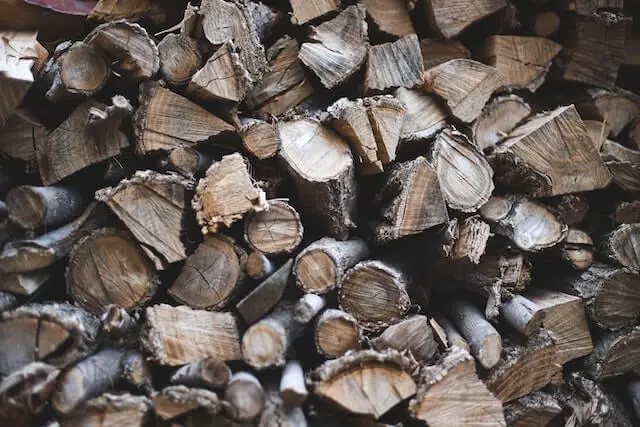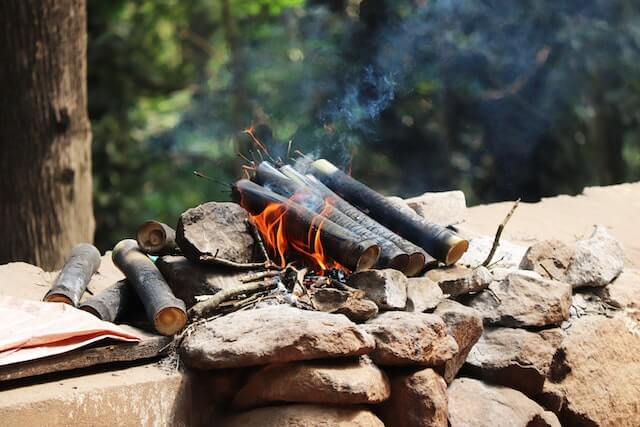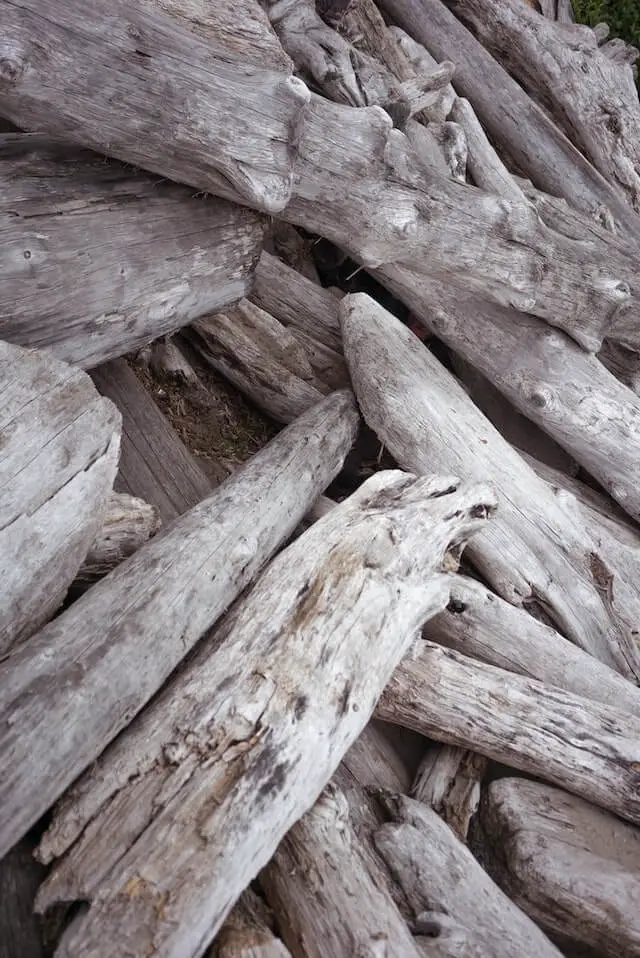If you burn wood in your fireplace or wood stove at home, then you’ll know how important it is to have quick access to dry firewood. Drying wet firewood logs can take months, so learning how to season firewood quickly is a skill every homeowner should learn.

So it’s important that you learn the steps you can take to speed up the drying process, allowing you to begin burning sooner.
So let’s get straight into some tips for drying firewood quickly and effectively.
Choose the Right Wood
Not all wood is created equal when it comes to drying. Hardwoods like oak and maple will take longer to dry than softer woods like pine or aspen.
So when choosing the wood to burn in your home, make sure you pick the driest logs possible.
Split Wood into Smaller Pieces
Splitting firewood down into small pieces can help speed up drying because it exposes more surface area to air circulation and heat.
So if you are able to split your firewood logs before stacking them, you’ll achieve better results for drying.

You should consider cutting and splitting into pieces no thicker than 6-8 inches. This will create more surface area which will allow the wood to dry faster. Make sure that your axe or chainsaw is sharp and that you have a firm grip on it before you start splitting the wood.
Bring the Wood Inside
If you are drying your firewood during the winter months, then the best way to dry wet firewood is by drying firewood indoors where the heat and dry air will help accelerate the process.
While this isn’t an option for everyone, if you have a basement or garage with plenty of space, this could be an ideal solution.
Just make sure to choose a well-ventilated area that won’t attract pests, termites or mold. Once the wood has had time to air out inside, move it back outside before using it in your fireplace or wood stove.
Use a Kiln
An even faster way to dry your wet firewood is by using a kiln. While kilns can be expensive, they are highly efficient and can cut down on drying time significantly.
You should be careful when operating a kiln since high temperatures can cause sparks and create dangerous situations. But if used properly, a kiln can be an effective way of ensuring your wood is completely dry before burning it.
Stack Your Firewood Properly
The way you choose to stack your firewood also plays an important role in drying times.
You should always stack your logs off the ground on something like pallets or even cinder blocks so that air can flow freely around them while they dry out naturally over time.

You also need to make sure that each log has enough space between itself and other logs so that air can circulate properly. Consider stacking in layers of no more than 12 inches thick for optimal results.
Cover with Plastic Sheeting
Another option for getting your logs dried even faster is to cover the top half with plastic sheeting (or burlap).
Doing this creates a mini greenhouse effect which traps heat and keeps moisture from seeping back into the logs while they are drying out.
Once again, it is important to make sure that there is plenty of air circulation between each log while they are covered so that mold does not form due to trapped humidity under the plastic sheeting.
Conclusion
Drying wet firewood doesn’t have to be a difficult task or take an endless amount of time. If you are looking for the fastest way to dry firewood, then there are several quick and easy ways to speed up the process without breaking the bank.
Whether you choose to bring your firewood indoors or invest in a kiln, make sure to stack them correctly with plenty of room between the firewood logs for proper air circulation.
And if you want to speed things up a lot more, consider covering your firewood with plastic sheeting to create a mini greenhouse effect and trap heat.
Do not be fooled into burning wet firewood – not only can it be dangerous for your home and property, but it also emits harmful toxins that are bad for you and your family.
